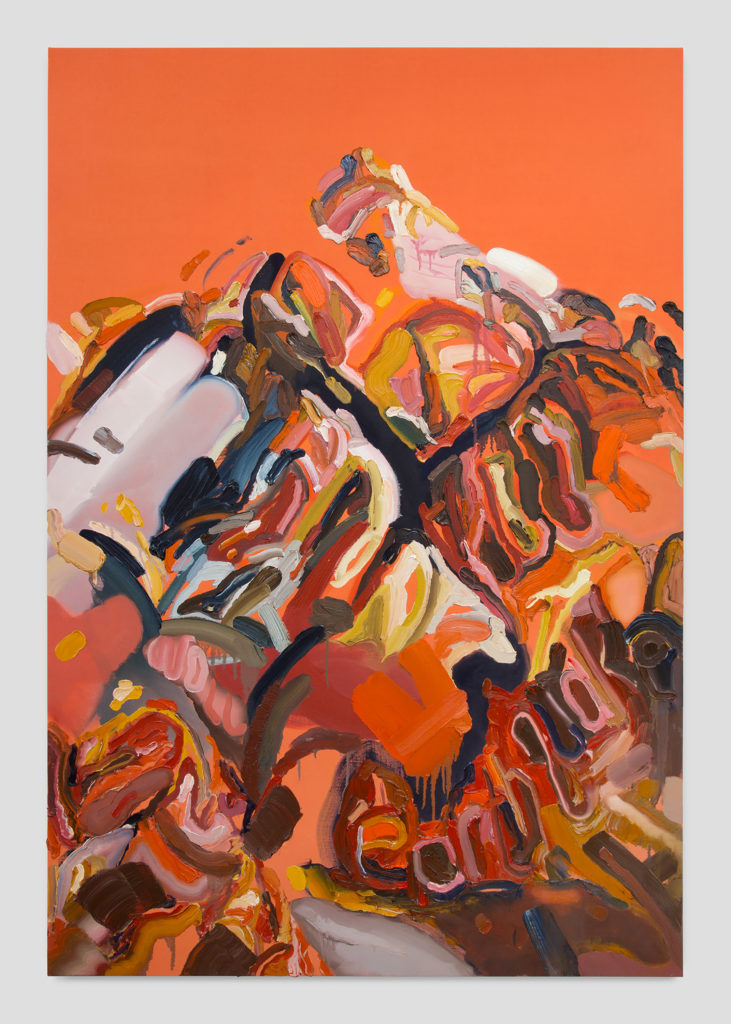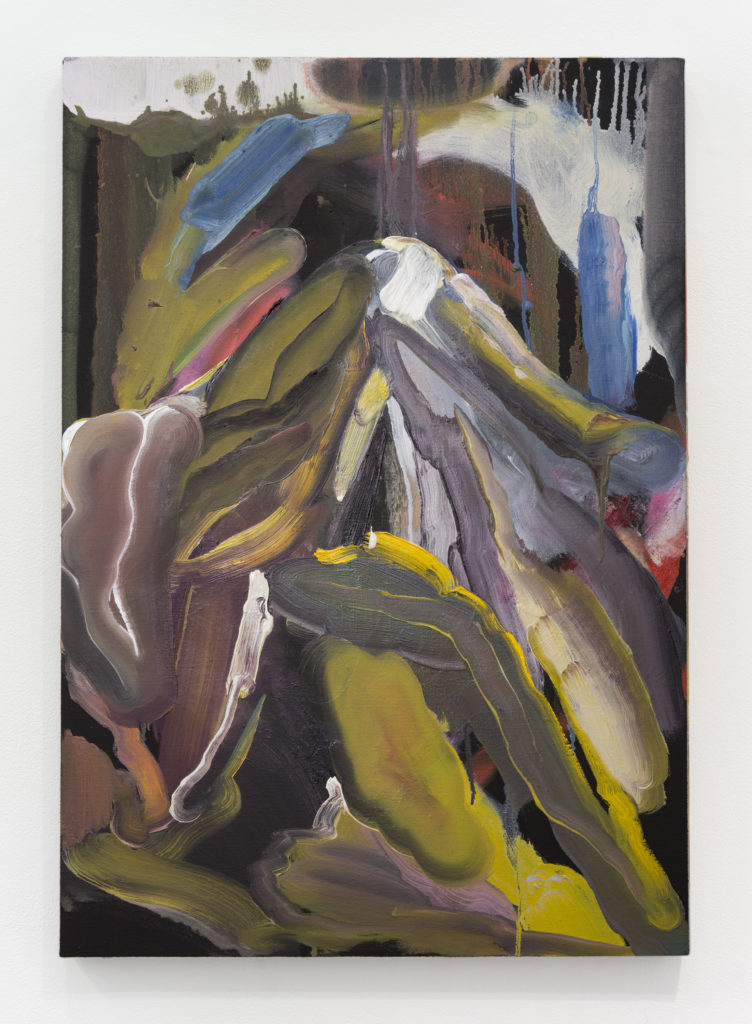White, Woll, and the artist’s sense of control

Taylor Anton White, Above The Fruited Plainnnz!, 2020, acrylic, airbrush, wax crayon, pencil, paper, rubber coated wire, cardboard, screws, and plywood, 36 x 36 x 2 inches.
Contributed by Riad Miah
Taylor Anton White and Andy Woll’s solo exhibitions opened at two galleries next door to each other in Tribeca, White’s at Monica King Contemporary and Woll’s at Denny Dimin Gallery. Their bodies of work are outwardly different, but they are both visually as well as substantively compelling and have enough common ground to merit a comparative look.
White is conspicuously aware of recent art history, plainly alluding to noted twentieth-century artists. Some of his pieces recall Robert Rauschenberg’s combines, and he shares that artist’s sense of humor. His smaller assemblages – for example, Above The Fruited Plainnz! – are densely packed with a range of materials that may be whimsically pulled together but remain visually harmonious and intuitively centered. In WiFi Tony Robbins Internet (Workout Diet), a portrait presumably of the titular artist lying in his bed deluged with thoughts of his work, White seems to be riffing on a Philip Guston motif.
Like White, Woll appears alert to his influences. His work brings to mind that of Leon Kossoff and Frank Auerbach and especially the landscapes of David Bomberg. Woll’s use of materials is more limited than White’s, his small and reductive pictures of horses tightly showcasing the paint’s color and viscosity and hinging on delicately leveraged compositional integration: if one gesture were removed, the image might fall apart.
Both artists are able to impart spontaneity and a degree of chaos while maintaining subtle formal control. In Woll’s series titled Mt. Wilson (Fiery Brown I–IV), each of the 96″ x 66″ paintings consists of short, thick impasto marks converging to an open peak. Towards the bottom, the paint is denser and more compressed, involving wet-on-wet applications of two fairly close colors to achieve blending. Juxtaposed with more regimented passages higher up, the overall effect is that of trembling, suggesting subterranean disarray yet systematically generated. White’s multimedia approach is less purely visual and more intellectualized. In Harmonized Puppet (WiFi, Internet), a knotted, scribbled black patch sits in the top left quadrant. It seems to preside over paler elements of the work, which includes sewing and collaging, so as to reconcile and supervise them.
 Andy Woll, Mt. Wilson (Fiery Brown I), 2019, oil on linen, 96 x 66 inches
Andy Woll, Mt. Wilson (Fiery Brown I), 2019, oil on linen, 96 x 66 inches
 Andy Woll, Mt. Wilson (Santa Ana III), 2017, oil on linen, 31.5 x 22 inches
Andy Woll, Mt. Wilson (Santa Ana III), 2017, oil on linen, 31.5 x 22 inches
For these artists, text operates as a kind of moderator within the picture plane. The LA-based Woll discreetly inscribes the word ‘earthquake’ in Fiery Brown I and his last name in the larger paintings, apparently not so much to clarify their content as to amplify their studiously declarative intent and their subjectively iterative nature: Woll is painting not just external objects but also paintings of them. White includes words in pieces such as Oh No! It’s Commandos (With Night Vision) – those are, in fact, the words in the piece itself, doubtless imputed to the eponymous hunters’ targets or witnesses – and Various Cowboys, in which he intersperses other images with witty verbal notations of different types of cowboys (mean, romantic, muscular, financial advisor, plastic …). For both artists, text, like titles, becomes an aid in constraining the imagery’s tilt towards incomprehensibility, and therefore a nuanced mode of aesthetic control. What the two artists share, overarchingly, is that fine balance.
“Taylor Anton White: Free_Hotdog.pdf,” Monica King Contemporary, 39 Lispenard Street, New York, NY. Through March 14, 2020.
“Andy Woll: Strange Animal,” Denny Dimin Gallery, 39 Lispenard Street, New York, NY. Through March 7, 2020.
About the Author: Artist and educator Riad Miah was born in Trinidad and Tobago and now lives and works in New York City. He has exhibited with Lesley Heller Workspace, Rooster Gallery, and Sperone Westwater Gallery, among others.
